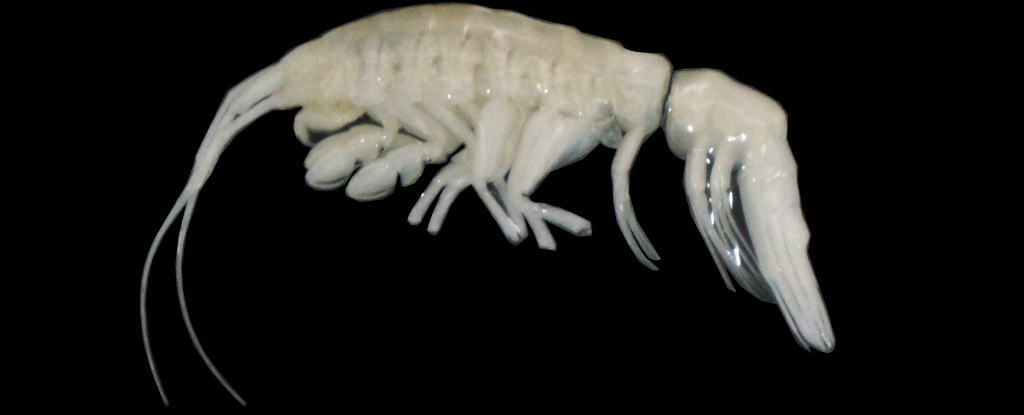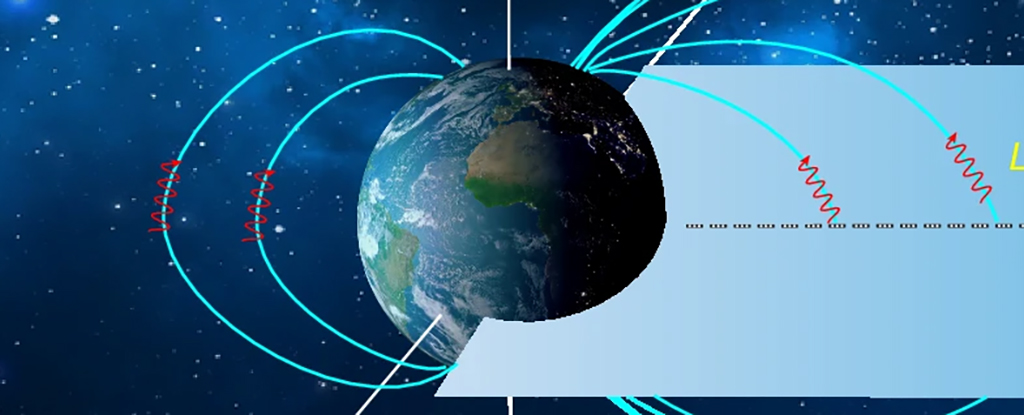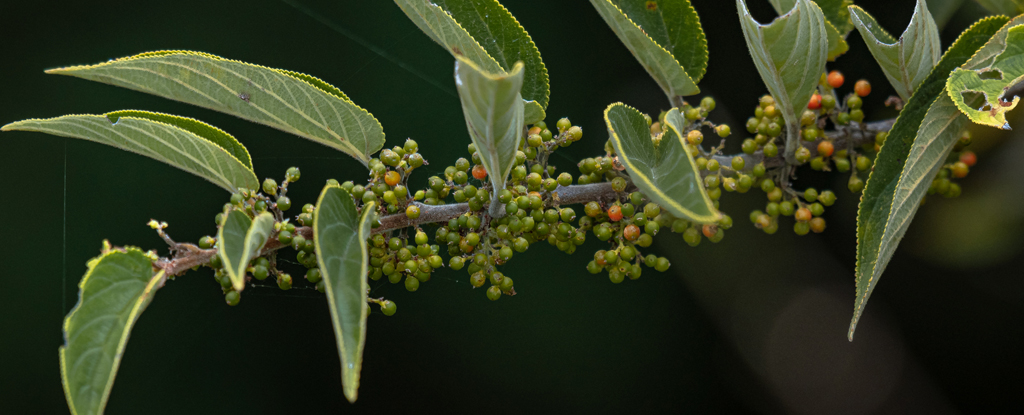Earth’s oceanic trenches are still shrouded in mystery, and for good reason. Plunging as deep as 11 kilometers (6.8 miles) beneath the surface, their dark, frigid waters are under mind-boggling pressure – up to 1,088 atmospheres (or 16,000 pounds per square inch).
Yet despite the harsh conditions, strange creatures somehow thrive down there. And after decades of struggling to study them, scientists are finally beginning to shed light on ocean trenches and their inhabitants.
In a new study, researchers from the US and Chile unveil one such species: a fast, ghostly predator from the Atacama Trench off South America’s western coast, who stands apart from many trench dwellers.
Named Dulcibella camanchaca, the creature is an amphipod – a diverse group of shrimp-like crustaceans that typically eat detritus or scavenge for food in marine or freshwater habitats. The researchers found four individuals from this species at a depth of 7,902 meters.
D. camanchaca is the first big, active predatory amphipod found so deep, according to the study’s authors, from Chile’s University of Concepción and Woods Hole Oceanographic Institution (WHOI) in the US.
Its discovery in the hadal zone hints at how little we still know about these weird marine underworlds. Trenches may hold biological secrets with valuable applications for humanity, not to mention key information about their own ecology and conservation needs.
Studying extreme habitats like this on Earth also informs the search for alien life on ocean moons like Europa or Enceladus.
For now, however, finding this unique Earthling is big news in its own right. All other amphipods found in the Atacama Trench’s darkest depths have been scavengers, the authors note, and while predatory species are known from other trenches, they’re still a noteworthy discovery anywhere.
Especially in this case, it seems: D. camanchaca not only hails from a previously unknown species, but its morphology and DNA both suggest this is also a newly discovered genus.
Two similar amphipod genera are named after characters from the 17th-century Spanish novel Don Quixote, so the team continued this tradition by naming the novel genus Dulcibella in honor of a character named Dulcinea del Toboso (the scientific moniker Dulcinea was already taken by a beetle).
The species name camanchaca has been translated as “darkness” from indigenous languages in nearby western South America, the researchers note. They chose it to signify the pitch-black depths this creature prowls.
“Dulcibella camanchaca is a fast-swimming predator that we named after ‘darkness’ in the languages of the peoples from the Andes region to signify the deep, dark ocean from where it predates,” says co-lead author Johanna Weston, a hadal ecologist at WHOI.
The amphipod’s white coloring is standard attire in dark habitats like caves or trenches.
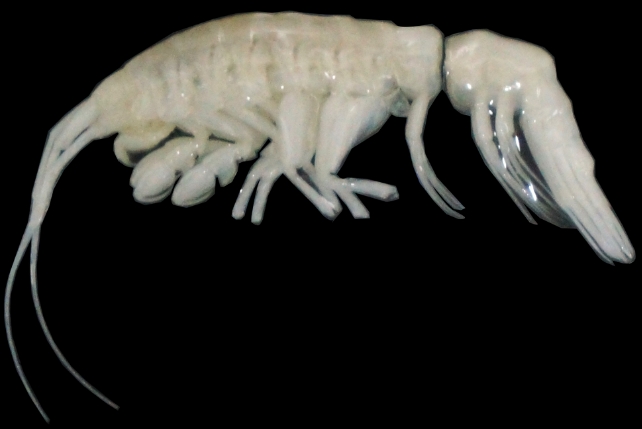
This specimen was measured at just under 4 centimeters, more than double the size of its most similar relatives Dorotea and Cleonardo. Unlike less mobile amphipods, it darts around nimbly in pursuit of food.
D. camanchaca hunts and eats with the help of specialized raptorial appendages called gnathopods. Food options are limited in oceanic trenches, but this species seems to prey on other, smaller amphipods.
The Atacama Trench stretches up to 8 km below the surface of the eastern Pacific, formed as one tectonic plate slowly grinds into and beneath another.
While trenches globally are classified together as the hadal zone, they tend to be physically isolated from each other in real life, like islands of negative space separated by swaths of seafloor.
And like islands on the surface, each oceanic trench may host its own wealth of endemic wildlife, teeming with creatures found nowhere else. Much more research will be needed to reveal the abundance and diversity of trench life, but findings like this can go a long way.
Finding a new species is always a big deal, especially in such an extreme environment, and discovering a genus is even rarer. But doing so in a place like the Atacama Trench adds unique intrigue, Weston explains, because of what it implies about other, still-unknown residents of this shadowy realm.
“Most excitingly, the DNA and morphology data pointed to this species being a new genus, too, emphasizing the Atacama Trench as an endemic hotspot,” she says.
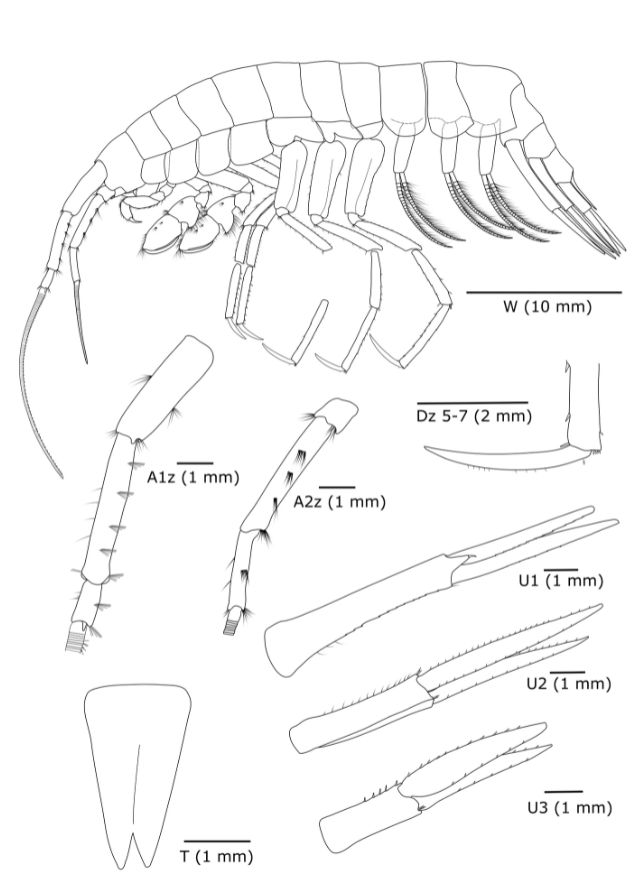
The new species turned up during a 2023 research expedition, part of Chile’s new Integrated Deep-Ocean Observing System.
Researchers collected the specimens with a lander vehicle, or an untethered platform that ferries scientific gear (like baited traps) to the hadal zone and back.
“This study’s collaborative effort and integrative approach confirmed Dulcibella camanchaca as a new species and highlights ongoing biodiversity discoveries in the Atacama Trench,” says co-lead author Carolina González, an oceanographer from the University of Concepción.
“This finding underlines the importance of continued deep-ocean exploration, particularly in Chile’s front yard. More discoveries are expected as we continue to study the Atacama Trench.”
The study was published in Systematics and Biodiversity.


